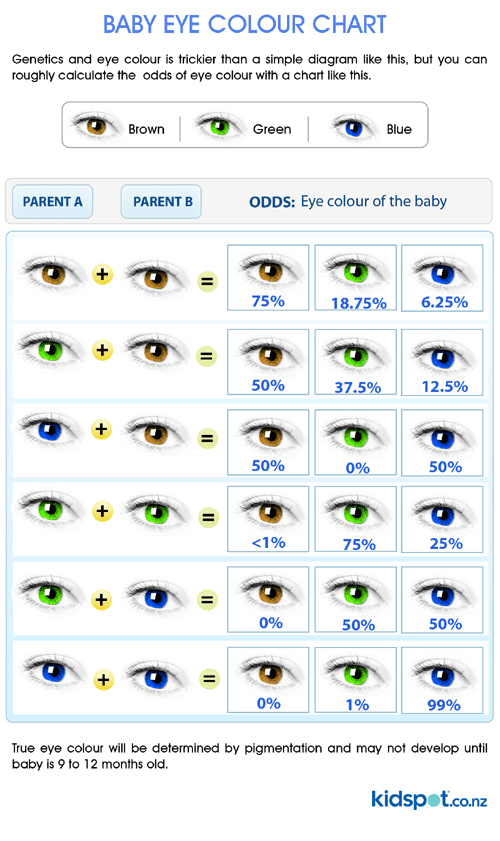Have you ever wished you could trade those brown eyes for something a little more striking, like piercing blue or captivating green? The allure of different eye colors has captivated humans for centuries, with many seeking ways to alter their natural hues. While the fantasy of quickly transforming your eye color might be tempting, the reality is far more complex and nuanced.

Image: kidspot.co.nz
This article delves into the science behind eye color, exploring the various methods that have been attempted throughout history and the current realities of safe and effective options. We’ll delve into the world of genetics, temporary solutions, and the evolving landscape of permanent eye color alteration.
The Science of Eye Color
Before we explore the potential for changing eye color, let’s understand how it’s determined in the first place. Eye color is primarily influenced by the amount and distribution of a pigment called melanin in the iris, the colored part of the eye. Melanin comes in two forms: eumelanin, which creates brown and black colors, and pheomelanin, which contributes to red and yellow tones.
The genetics of eye color are complex, with multiple genes playing a role. However, one gene, known as OCA2, is particularly influential. This gene controls the production of P protein, which plays a crucial role in the creation of melanin. Variations in this gene can lead to varying levels of melanin production, ultimately resulting in different eye colors.
Temporary Solutions: The Illusion of Change
For those seeking a quick and temporary change in eye color, several options exist, though these largely create an illusion rather than a permanent alteration.
Colored Contact Lenses
Colored contact lenses are arguably the most popular and readily available option for changing eye color. These lenses come in a wide range of shades and patterns, allowing individuals to experiment with different looks. Modern colored contact lenses are generally safe when properly fitted and maintained by an eye care professional. However, it’s essential to choose reputable brands and follow proper hygiene practices to avoid potential eye irritation or infections.

Image: www.pinterest.co.uk
Eye Makeup
Eye makeup, particularly eyeshadow and eyeliner, can also create the illusion of different eye colors. By strategically applying colors that complement or contrast with your natural eye color, you can enhance or alter its appearance. However, this approach is temporary and requires meticulous application to achieve a convincing effect.
Light Reflection
The way light reflects off your iris can also influence its perceived color. Wearing certain colors of clothing or using specific lighting conditions can subtly alter how your eye color appears. While not a true change, these tricks can make your eyes seem brighter or more vibrant.
Permanent Eye Color Alteration: Exploring the Possibilities
The quest for permanent eye color alteration has fascinated scientists and individuals for decades. While some techniques have been explored, none have proven to be entirely safe, effective, and widely accessible.
Laser Treatments: A Controversial Approach
In the past, laser treatments gained attention as a potential way to alter eye color. The theory behind these treatments was to use lasers to remove melanin from the iris, potentially lightening the eye color. However, these procedures were highly experimental and carried significant risks, including severe eye damage, blindness, and other complications. As a result, they are no longer considered safe or ethical.
Iris Implantation: A Developing Technology
Iris implantation involves inserting a colored implant into the iris. This procedure is still in its early stages of development and is not widely available. While the concept holds potential for permanently changing eye color, it comes with its own set of risks and challenges. These include potential complications during surgery, implant rejection, and the possibility of permanent visual impairment.
Gene Editing: A Potential Horizon
The field of gene editing is rapidly advancing, opening up new possibilities in medicine and beyond. Theoretically, gene editing could potentially be used to alter the genes that determine eye color. However, this technology is highly controversial due to ethical and safety concerns. Gene editing for non-medical purposes remains a long way off, with numerous scientific and ethical hurdles to overcome.
The Future of Eye Color Alteration
While changing eye color permanently might seem like a distant dream, research and technological advancements continue to explore new possibilities. As gene editing technology matures, it may become a safer and more viable option for altering eye color. However, the ethical considerations surrounding genetic modifications remain a critical discussion point.
In the meantime, individuals with a desire to change their eye color can explore temporary solutions like colored contact lenses and eye makeup. It’s important to prioritize safety and consult with eye care professionals for guidance before making any drastic decisions.
How Do You Change Your Eye Color
Conclusion
The fascination with altering eye color reflects our desire for physical transformation and self-expression. While technology continues to advance, the pursuit of permanent, safe, and effective eye color alteration remains a challenging endeavor. In the present day, temporary solutions like colored contact lenses and makeup provide a safe and readily available avenue for exploring different looks. The future of eye color alteration remains uncertain, but it’s a field worth watching as we navigate the ever-evolving landscape of science and technology.





